Understanding the Importance of Effective Communication in Therapeutic Relationships
Effective communication forms the foundation of a successful therapeutic relationship. It fosters trust, promotes openness, and enhances the overall outcomes of therapy. Whether you're a client or a mental health professional, developing strong communication skills can significantly influence progress and satisfaction. This article explores key strategies, techniques, and core elements of therapeutic communication to help you navigate and improve your interactions with therapists.
Core Elements of Therapeutic Communication
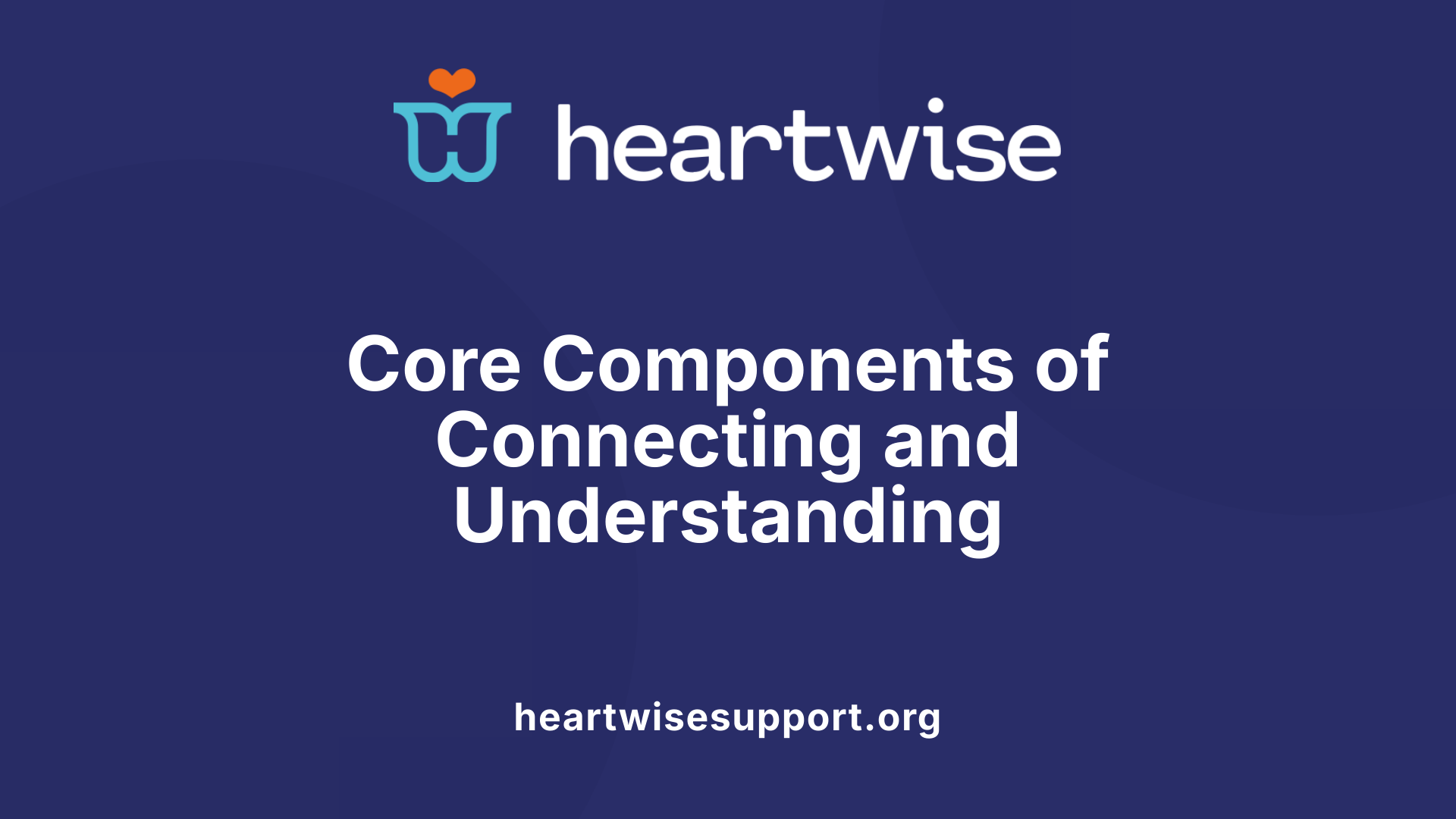
What are the key elements of therapeutic communication?
Effective therapeutic communication is central to building a trusting relationship between therapist and client. It involves several interconnected components that facilitate understanding, support, and emotional safety.
One of the most fundamental aspects is active listening. This means giving the client your full attention, maintaining eye contact, and observing body language. It also involves paraphrasing or reflecting what the client has said to demonstrate understanding and validate their feelings. Attentiveness through body language, such as nodding and leaning forward, encourages clients to continue sharing.
Empathy plays a vital role. Recognizing and acknowledging the client’s emotions fosters a sense of being understood and accepted. Techniques such as reflective responses or evocative language help clients explore their feelings more deeply, promoting self-awareness and insight.
Validation complements empathy by affirming the client’s experiences and emotions without judgment. This reinforcement helps clients feel safe and respected, encouraging honest communication.
Effective verbal and non-verbal cues together shape the therapeutic atmosphere. Verbal communication should be respectful, clear, and culturally sensitive. Using simple language, especially when discussing complex topics, ensures clients understand and can engage actively.
Non-verbal cues include facial expressions, eye contact, posture, gestures, physical proximity, and personal grooming. Research indicates that up to 93% of communication is non-verbal. These cues often convey empathy and attunement more powerfully than words.
Creating a safe environment is also crucial. This involves ensuring privacy, demonstrating genuine care, and establishing rapport. When clients feel secure, they are more likely to open up about difficult or sensitive issues.
Responding appropriately is a response technique focused on reflecting clients’ feelings and content, asking open-ended questions, and summarizing key points. This not only clarifies understanding but also signals active engagement.
In summary, core elements of therapeutic communication blend listening, empathy, validation, expressive verbal and non-verbal cues, and an environment of safety. Together, these components foster a constructive space where clients can explore, disclose, and grow.
The Role of Nonverbal Communication
What are the 5 C's of effective communication?
The five principles that guide effective communication are Clear, Concise, Concrete, Curious, and Compassionate. These principles help create messages that are easily understood and foster understanding in various interactions.
- Clear: Communicate your message straightforwardly, owning your words to avoid ambiguities.
- Concise: Keep your messages brief, focusing on the essentials without unnecessary details.
- Concrete: Make specific requests or statements with associated solutions or understanding, reinforcing trust through eye contact.
- Curious: Show genuine interest through active listening, asking questions, and engaging with others' perspectives.
- Compassionate: Express empathy and consider others' feelings to resolve conflicts constructively.
Applying these principles strengthens relationships, promotes understanding, and enhances conflict resolution capabilities.
How can I communicate effectively with my therapist?
Effective communication with your therapist hinges on honesty and openness. Sharing your genuine thoughts and feelings helps build trust and provides your therapist with the insights necessary to support you appropriately.
Clarifying your goals and expectations for therapy can help tailor the process to your needs. Don’t hesitate to ask questions about your therapist’s methods or approach—clarity fosters comfort and transparency.
Active participation also involves listening attentively, providing reflections, and giving feedback during sessions. This collaboration ensures that your therapy experience is meaningful and tailored to your growth.
Remember, the therapeutic relationship flourishes when communication is genuine and ongoing, so staying engaged and candid will facilitate your progress.
The impact of nonverbal cues in therapy
Nonverbal communication constitutes a significant portion of overall interaction, often guiding and reinforcing spoken words.
Gaze and eye contact
Gaze signals attentiveness, interest, and openness. Maintaining steady eye contact during conversation fosters trust and demonstrates engagement.
Facial expressions
Facial cues such as smiles, frowns, or raised eyebrows convey emotional states, often providing deeper insight into how a person feels beyond their words.
Posture and gestures
Open posture and gestures like nodding affirm understanding and receptiveness. Conversely, closed or defensive body language can suggest discomfort or resistance.
Physical proximity and space
The distance maintained during conversations influences comfort levels; appropriate proximity reflects respect, while too much or too little can impact connection.
Personal grooming
Appearance and grooming signal self-respect, professionalism, and readiness for interaction. Proper grooming can enhance confidence and create a positive impression.
Understanding and consciously observing these nonverbal aspects can significantly improve communication effectiveness in therapy.
| Aspect | Description | Impact on Communication |
|---|---|---|
| Gaze and Eye Contact | Maintaining steady eye contact to show engagement | Builds trust, shows interest |
| Facial Expressions | Use of smiles, frowns, and other facial cues | Reveals true emotional states |
| Posture and Gestures | Open vs. closed body language, hand gestures | Communicates confidence, openness |
| Physical Proximity | Distance kept during interaction | Affects comfort and relational boundaries |
| Personal Grooming | Appearance and hygiene | Reflects professionalism, self-respect |
Active awareness and control over these nonverbal signals can enrich the therapeutic dialogue, making it more authentic and effective.
Developing Effective Communication Skills
Improving your communication skills involves continuous practice and reflection. Using tools like worksheets and participating in activities or exercises can help enhance verbal, vocal, and nonverbal communication.
Therapists and support resources offer assessment tools, courses, and practice scenarios to hone skills such as active listening, mindfulness, boundary setting, and speech style.
A person’s ability to express themselves clearly while understanding others fosters stronger interpersonal relationships, reduces misunderstandings, and creates a nucleus for collaborative problem-solving.
Some practical tips include asking open-ended questions, practicing good body language (like maintaining eye contact and nodding), and setting aside dedicated time for conversations free from distractions.
Regular feedback from professionals or peers provides insights into areas for improvement, integrating continuous learning into everyday interactions.
Resources for Building Communication Skills
Numerous resources are available for developing better communication proficiency:
- Self-help guides and e-learning courses
- Therapeutic interventions focusing on communication
- Reflection exercises and role-playing activities
- Assessment tools to identify strengths and weaknesses
Engaging with these resources can lead to greater confidence, improved emotional regulation, and better relationship management.
Overall, mastering communication techniques is a journey that pays dividends in personal, social, and professional life, notably within therapeutic settings.
| Skill Area | Techniques/Tools | Benefits |
|---|---|---|
| Verbal Communication | Clarity, simplicity, 'I' statements, open-ended questions | Better understanding, less confusion |
| Vocal Communication | Tone modulation, pace control, mindfulness of volume | Enhances engagement and clarity |
| Nonverbal Communication | Eye contact, gestures, posture, grooming | Reinforces verbal messages |
| Reflective and Active Listening | Paraphrasing, summarization, validation | Builds trust, promotes understanding |
| Conflict Resolution | Boundary setting, empathic responses, assertiveness | Reduces misunderstandings |
Practicing these areas through intentional effort and feedback helps develop a robust communication style capable of fostering meaningful connections across all levels of interaction.
Mastering Active Listening
What techniques can improve communication in therapy?
Effective communication in therapy hinges on employing specific techniques that foster understanding, trust, and openness. Active listening stands at the core, requiring therapists to be fully present during sessions. This involves paying close attention to what clients are saying, both verbally and non-verbally.
Reflecting client statements is a powerful tool, where therapists paraphrase or summarize what clients have expressed. This demonstrates understanding and validation, encouraging clients to elaborate further.
Asking clarifying questions is another essential method. These open-ended inquiries invite clients to explore their feelings and thoughts more deeply, providing richer insights and clarifications.
Using body language effectively—such as maintaining eye contact, nodding, and practicing an open posture—enhances the connection and demonstrates engagement. These gestures convey empathy and reassurance.
Minimizing distractions during therapy sessions is crucial. Turning off notifications, choosing a quiet environment, and focusing solely on the client help create a safe, distraction-free zone for meaningful dialogue.
Overall, these techniques foster an environment where clients feel heard, understood, and supported, which is vital for therapeutic progress.
How can I improve communication with my therapist?
Improving communication with your therapist involves active participation and honesty. Prepare for sessions by reflecting on your feelings and jotting down thoughts or questions that come up. This preparation helps articulate your concerns clearly.
During sessions, practice active listening by paying close attention, using body language like maintaining eye contact and nodding, and reflecting back what you hear. Don't hesitate to ask clarifying questions if something isn’t clear; this ensures mutual understanding.
Being open about your feelings and feedback fosters trust and helps your therapist tailor the approach to your needs. If you experience any difficulty in expressing yourself or understanding your therapist's points, discuss these challenges openly.
Building a strong rapport through consistency, honesty, and engagement will strengthen your therapeutic relationship and enhance the effectiveness of your sessions.
Why is effective communication important in therapy?
Effective communication shapes the entire therapeutic environment. It facilitates trust, promotes openness, and creates a safe space for clients to explore sensitive issues.
When communication is clear and empathetic, clients are more likely to share honestly, which leads to more accurate assessments and targeted interventions.
Therapists utilizing effective communication techniques can better understand clients’ needs, goals, and emotional states. This understanding enhances the ability to support clients’ growth and recovery.
Moreover, good communication reduces misunderstandings and misinterpretations, which can hinder progress. It also encourages collaboration, making clients active participants in their healing process.
In summary, mastering communication skills such as active listening, reflection, body language, and patience directly influences therapy outcomes and client satisfaction.
Preparing for Successful Sessions
How can I prepare for therapy sessions to enhance communication?
Preparation plays a significant role in making the most out of therapy. One effective approach is to reflect on your personal feelings, thoughts, and goals beforehand. This self-awareness helps you articulate your concerns more clearly and openly.
Writing down key thoughts or concerns before your appointment can serve as a helpful guide during the session. It ensures that important topics are not overlooked and allows you to organize your ideas. This practice can also reduce anxiety and make discussions more focused.
Practicing mindfulness and self-awareness techniques can enhance your ability to stay present and engaged during the session. These strategies help you observe your emotions and reactions nonjudgmentally, fostering clearer communication.
Asking questions about the therapeutic process is another valuable step. Understanding what to expect and clarifying your goals with your therapist create a collaborative environment. Such questions might include queries about treatment methods, progress tracking, or specific concerns you have.
Managing barriers to communication is essential for effective therapy. If you experience anxiety, cultural challenges, or other obstacles, be open with your therapist about these issues. Addressing potential difficulties proactively helps build trust and ensures a smoother therapeutic experience.
These preparation strategies not only improve the quality of your interactions but also promote a safe space where you feel comfortable sharing and exploring difficult topics. Remember, effective communication is a skill that develops with practice, and your willingness to prepare can significantly enhance your therapeutic outcomes.
Developing Effective Communication Strategies
What techniques can improve communication in therapy?
Effective therapeutic communication hinges on a variety of techniques that foster understanding, trust, and openness between the therapist and client. Central to these are active listening, where the therapist attentively listens, reflects, and paraphrases what the client shares to ensure clarity and validation. Using 'I' statements during conversations helps clients and therapists express emotions and thoughts without assigning blame, creating a respectful dialogue.
Asking open-ended questions encourages clients to explore their feelings more deeply and share insights that might remain unspoken with closed questions. Complementing verbal skills with attention to non-verbal cues such as eye contact, facial expressions, gestures, and physical proximity conveys empathy and attentiveness, strengthening the therapeutic relationship.
Creating a safe environment involves both acknowledging verbal communication and being mindful of body language, tone, and overall demeanor. These combined techniques help clients feel understood and accepted, paving the way for meaningful progress.
How can I communicate effectively with my therapist?
Effective communication with your therapist is a cornerstone of productive therapy sessions. To achieve this, be honest about your feelings, thoughts, and experiences, even those that are difficult to express. Transparency helps your therapist understand your concerns and tailor approaches accordingly.
Preparation also plays a vital role; reflecting on what you'd like to discuss and perhaps writing down your thoughts before sessions can improve clarity. Don’t hesitate to ask questions about the therapy process, methods, or any uncertainties—this fosters a collaborative atmosphere.
Active engagement involves listening carefully to your therapist’s insights and providing feedback. Using open-ended questions and sharing your goals can guide the focus of your sessions. Remember, the more openly and consistently you communicate, the more effectively your therapy can address your needs, leading to better outcomes and personal growth.
Overcoming Communication Barriers
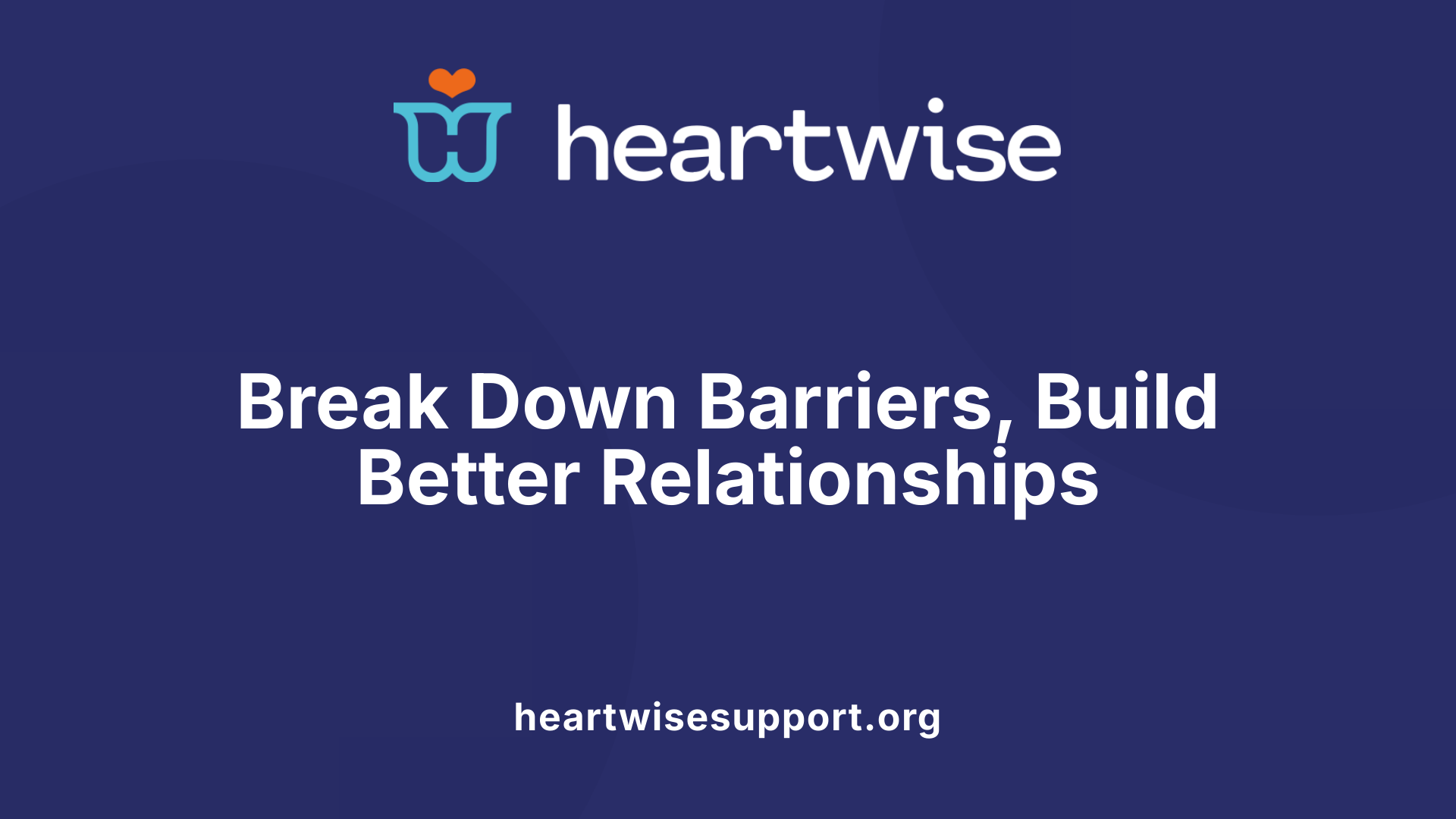
How does therapy facilitate improved communication skills?
Therapy plays a vital role in enhancing communication abilities by teaching clients practical techniques that enable clearer and more respectful interactions. One of the foundational methods involves assertive communication, where individuals learn to use "I" statements to express their feelings and needs without sounding accusatory or aggressive. This approach helps reduce defensiveness and fosters understanding.
In addition, therapy emphasizes active listening—focusing fully on the speaker, maintaining eye contact, and reflecting back what is heard. Therapists often encourage clients to ask open-ended questions, which invite elaboration and promote deeper dialogue. These skills help clients better understand others and avoid common misunderstandings.
Role-playing exercises are frequently used in therapy sessions, providing a safe space for individuals to practice new communication strategies, gain confidence, and receive constructive feedback. Empathy and patience are also cultivated, enabling clients to connect more emotionally and build trust with others.
Beyond verbal techniques, therapy stresses the importance of non-verbal cues such as body language, facial expressions, and tone of voice—elements that significantly influence the quality of communication. Managing emotional responses during conversations, especially in stressful or sensitive situations, is another focus.
By integrating these practical skills and fostering self-awareness, therapy empowers individuals to navigate various communication contexts more effectively. This holistic approach supports healthier relationships—the cornerstone of emotional well-being and personal growth.
The Benefits of Effective Communication in Therapy and Healthcare
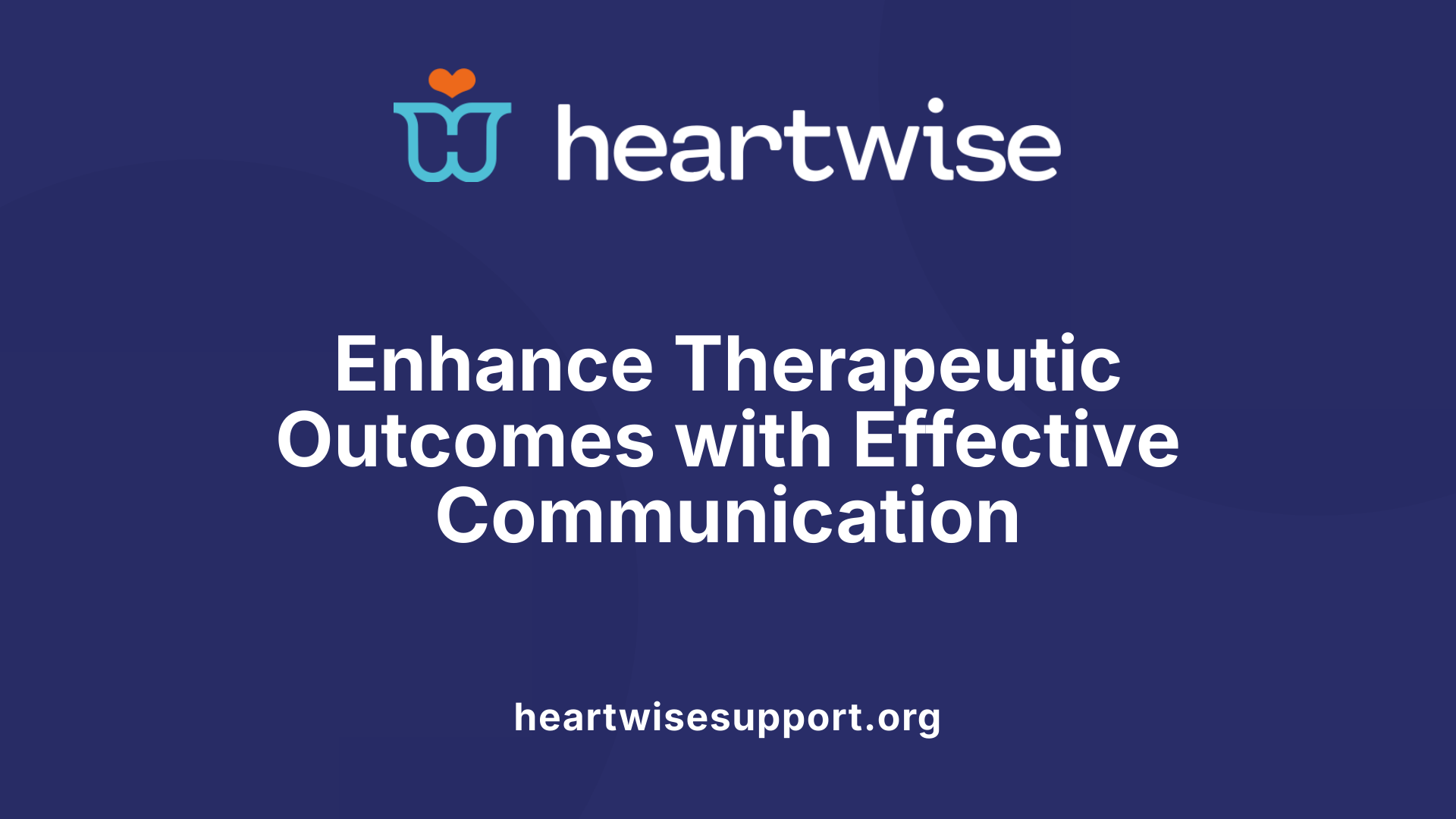
Why is effective communication important in therapy?
In therapy, effective communication plays a vital role in creating a safe and supportive environment where clients feel comfortable expressing themselves openly and honestly. This openness is the foundation for building trust between clients and therapists, which is essential for successful treatment outcomes.
Good communication helps clarify clients’ needs and goals, enabling therapists to tailor their approaches accordingly. When clients understand their issues better through clear dialogue, they become more engaged, leading to increased self-awareness and insight. This collaborative process encourages active participation, making therapy more effective.
Moreover, effective communication facilitates the therapeutic relationship, fostering a space where clients can explore difficult emotions and experiences with confidence. This mutual understanding enhances the overall quality of care and supports the client’s progress toward improved mental health.
How does effective physician-patient communication impact outcomes?
In healthcare settings, clear and compassionate communication between physicians and patients significantly impacts treatment success. When doctors explain conditions and treatments in understandable terms, patients are more likely to follow medical advice and adhere to prescribed plans.
Effective dialogue builds trust and rapport, reducing anxiety and fostering a sense of partnership. Patients who feel heard and understood are more engaged in their care, which can lead to better health outcomes, especially for chronic or complex conditions.
Additionally, good communication minimizes misunderstandings and medical errors, ensuring that treatment is accurate and appropriate. Healthcare providers also experience higher professional satisfaction when they can connect effectively with their patients, making the entire process more efficient.
Building trust and rapport
Trust and rapport are the backbone of successful therapy and healthcare. Techniques such as active listening, open-ended questions, empathetic responses, and nonverbal cues like eye contact and body language help strengthen these bonds.
When clients and patients feel genuinely understood and respected, they are more willing to share sensitive information and participate actively in their care. This sense of safety encourages honest conversations, leading to more personalized and effective interventions.
Enhancing treatment adherence
Clear communication ensures clients and patients understand their treatment plans, medication instructions, and lifestyle recommendations. By simplifying explanations, using visual aids, and encouraging questions, clinicians can improve adherence.
When individuals comprehend the reasons behind different aspects of their care, they are more motivated to follow through, which results in better health outcomes and faster progress.
Reducing misunderstandings and errors
Miscommunication can cause errors, delays, and frustration in healthcare and therapy. Regularly checking understanding through summary, reflection, and clarification minimizes these risks.
Being attentive to nonverbal cues like facial expressions, posture, and tone further enhances understanding. Recognizing and addressing misunderstandings promptly prevents escalation and promotes safety.
Improving patient and client satisfaction
Patients and clients who feel heard and respected report higher satisfaction levels. Using empathetic language, validating feelings, and involving them in goal-setting make them active participants in their journey.
Satisfaction boosts engagement, compliance, and overall experience with therapy or healthcare services.
Facilitating collaborative goal setting
Effective communication encourages joint decision-making. When therapists and clients co-create goals, clients take ownership of their progress, which increases motivation.
Open dialogue about preferences, concerns, and expectations ensures that goals are realistic and aligned with clients’ values, leading to more meaningful and sustainable changes.
| Aspect | Practice Strategies | Benefits |
|---|---|---|
| Building trust | Active listening, open-ended questions, empathetic responses | Enhanced safety, openness, and honesty |
| Treatment adherence | Simplified explanations, visual aids, encouragement to ask questions | Better compliance and outcomes |
| Reducing errors | Clarification, reflection, nonverbal cues monitoring | Safer, more accurate treatments |
| Client satisfaction | Validation, involvement in decisions, respectful language | Increased engagement and positive experiences |
| Goal setting | Collaborative dialogue, shared decision-making, clear articulation of aims | Increased motivation and sustainability of change |
Developing communication skills can be supported through various resources, including training activities, assessment tools, and practice exercises. These resources help both therapists and clients refine verbal, nonverbal, and reflective techniques.
In summary, effective communication enhances most aspects of therapy and healthcare, creating a foundation for trust, understanding, and successful outcomes. It requires ongoing effort, awareness, and skill development, but the benefits for both provider and recipient are substantial.
Resources and Practical Tips for Developing Communication Skills
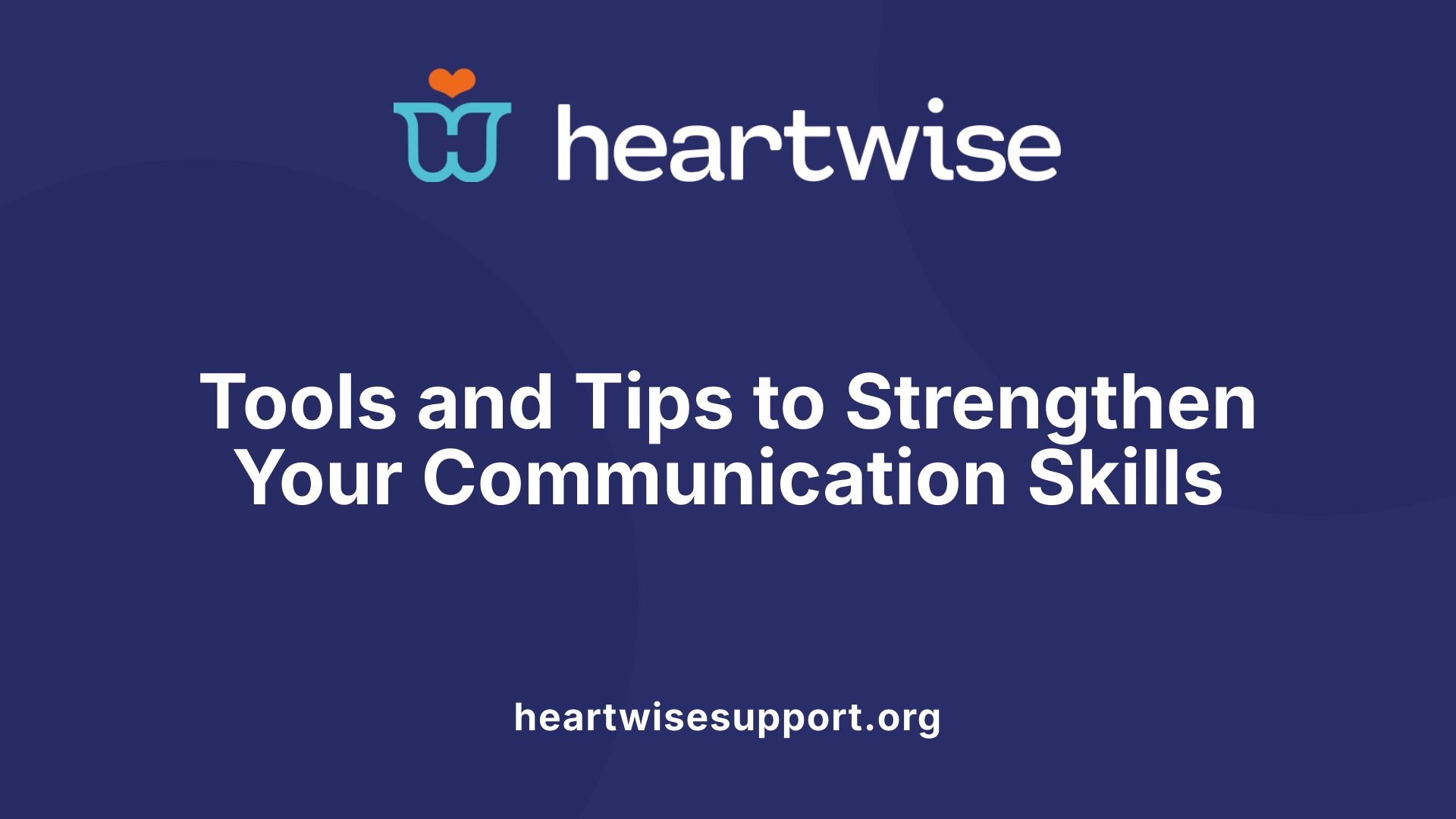
What resources are available to develop communication skills?
A variety of tools and resources exist to help individuals enhance their communication abilities. Self-help guides and online courses provide foundational knowledge in verbal and non-verbal communication techniques. Assessment tools and worksheets are valuable for identifying strengths and pinpointing areas for improvement. These resources often include exercises focused on active listening, empathy, and clarity.
Participating in role-playing exercises allows individuals to practice communication in a safe, simulated environment, building confidence and competence. Feedback from therapists, peers, or through self-assessment practices further facilitates growth by highlighting effective strategies and areas needing attention.
Online platforms and mobile apps offer accessible activities and structured programs that support ongoing development. These digital resources make regular practice manageable and adaptable to individual schedules, encouraging continuous skill refinement.
What strategies can I use to practice and improve communication skills?
Practicing communication skills effectively involves a range of consistent strategies. Engaging in role-playing scenarios with friends, family, or therapists helps simulate real-life conversations and enables you to test new techniques.
Recording your interactions — whether audio or video — provides valuable material for review. Listening to or watching these recordings helps you become aware of verbal and non-verbal cues, such as tone, posture, and facial expressions.
Seeking honest feedback from trusted individuals allows you to gain insight into your communication style and identify blind spots.
Mindfulness exercises can enhance your presence during conversations, reducing distractions and emotional reactivity.
Applying techniques like using 'I' statements and asking open-ended questions fosters clarity and promotes dialogue.
Setting personal goals for daily or weekly communication, such as practicing active listening or reducing interruptions, supports steady improvement.
Additionally, participating in workshops or online training modules broadens your understanding and provides new skills.
Regular reflection through journaling or self-evaluation helps track progress and recognize growth patterns.
By integrating these practices into daily life, you strengthen your ability to connect effectively with others and navigate complex conversations with confidence.
Summary Table of Resources and Strategies for Improving Communication Skills
| Resource/Strategy | Description | Benefits |
|---|---|---|
| Self-help guides and online courses | Structured programs teaching core communication techniques | Builds foundational knowledge and fosters independence |
| Assessment tools and worksheets | Assess personal skills and track progress | Identifies strengths and areas for improvement |
| Role-playing exercises | Simulated conversations in safe settings | Enhances confidence and practical skills |
| Feedback and self-assessment practices | Gathers external and internal evaluations | Promotes awareness and continuous growth |
| Digital apps and online platforms | Accessible training modules and activities | Supports consistent practice and flexibility |
| Recording interactions | Video or audio reviews of conversations | Provides visual and auditory feedback |
| Workshops and live training | Interactive learning sessions | Offers experiential skill development |
| Journaling and reflection | Personal written evaluations | Encourages self-awareness and long-term improvement |
Improving communication skills is a gradual process that benefits from diverse resources and regular practice. Combining self-directed learning with interactive exercises and honest feedback creates a comprehensive approach to becoming a more effective communicator in therapy, personal relationships, and everyday interactions.
Conclusion: Building a Foundation for Better Therapeutic Relationships
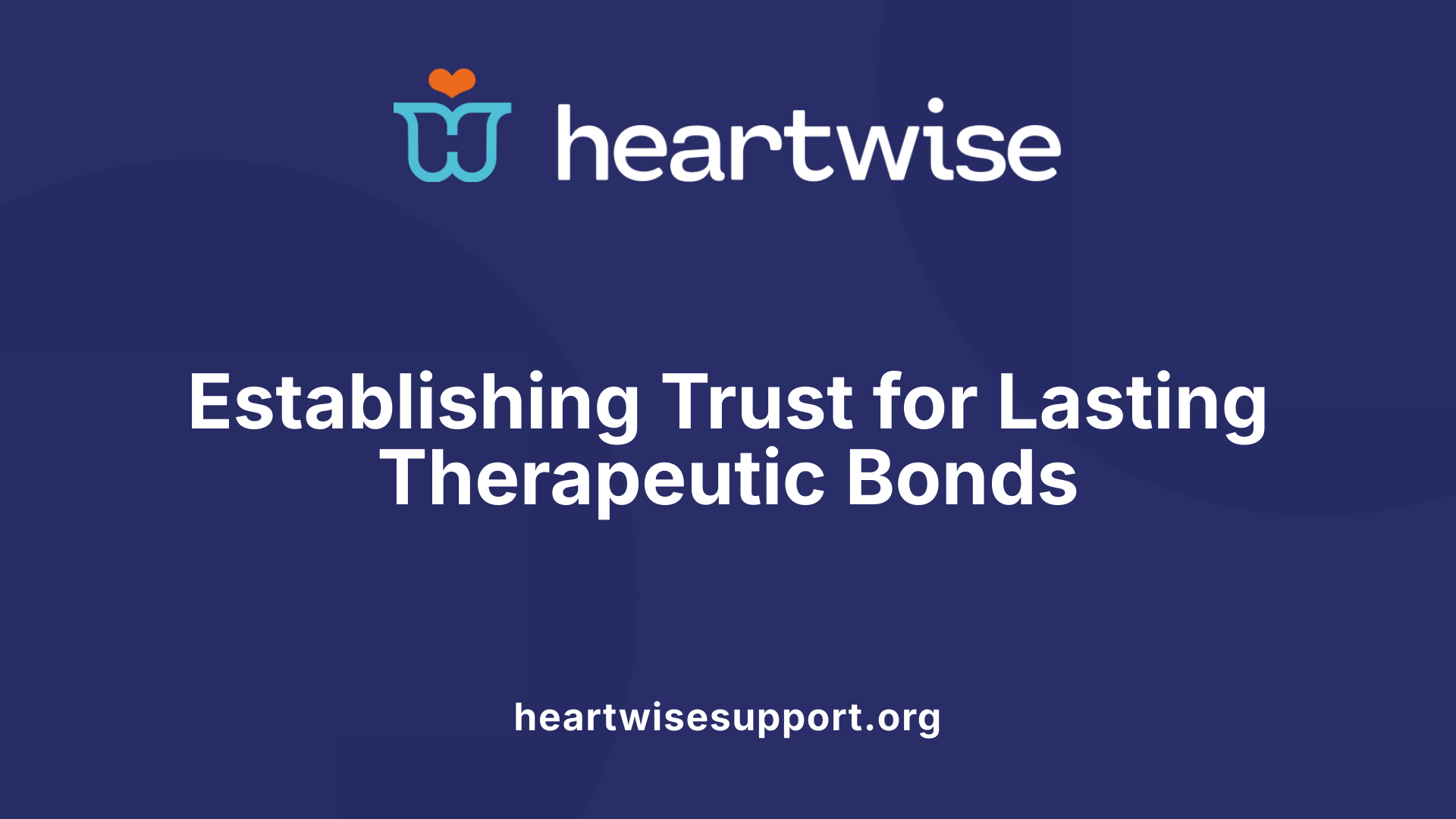
How does therapy facilitate improved communication skills?
Therapy plays a significant role in enhancing communication abilities by teaching clients practical tools and strategies. It encourages assertive expression through techniques like
Final Thoughts on Effective Communication in Therapy
Developing effective communication skills is an ongoing process that requires patience, practice, and self-awareness. By embracing core principles like active listening, empathy, honesty, and clarity, clients and therapists can build stronger, more trusting relationships. These skills not only enhance therapeutic outcomes but also improve interactions in everyday life, leading to healthier and more fulfilling connections. Investing in communication development is a vital step towards personal growth and effective mental health treatment, ultimately fostering environments where individuals feel heard, understood, and empowered.
References
- Communication Skills in Counseling & Therapy: 17 Techniques
- Communication Techniques | Article - Therapist Aid
- Mastering the Art of Therapeutic Communication: Building Trust and ...
- Best Practices in Therapist-Patient Communication: Enhancing ...
- Effective communication strategies for family therapy sessions
- Therapeutic Communication - StatPearls - NCBI Bookshelf
- How Counseling Facilitates Effective Communication Skills











